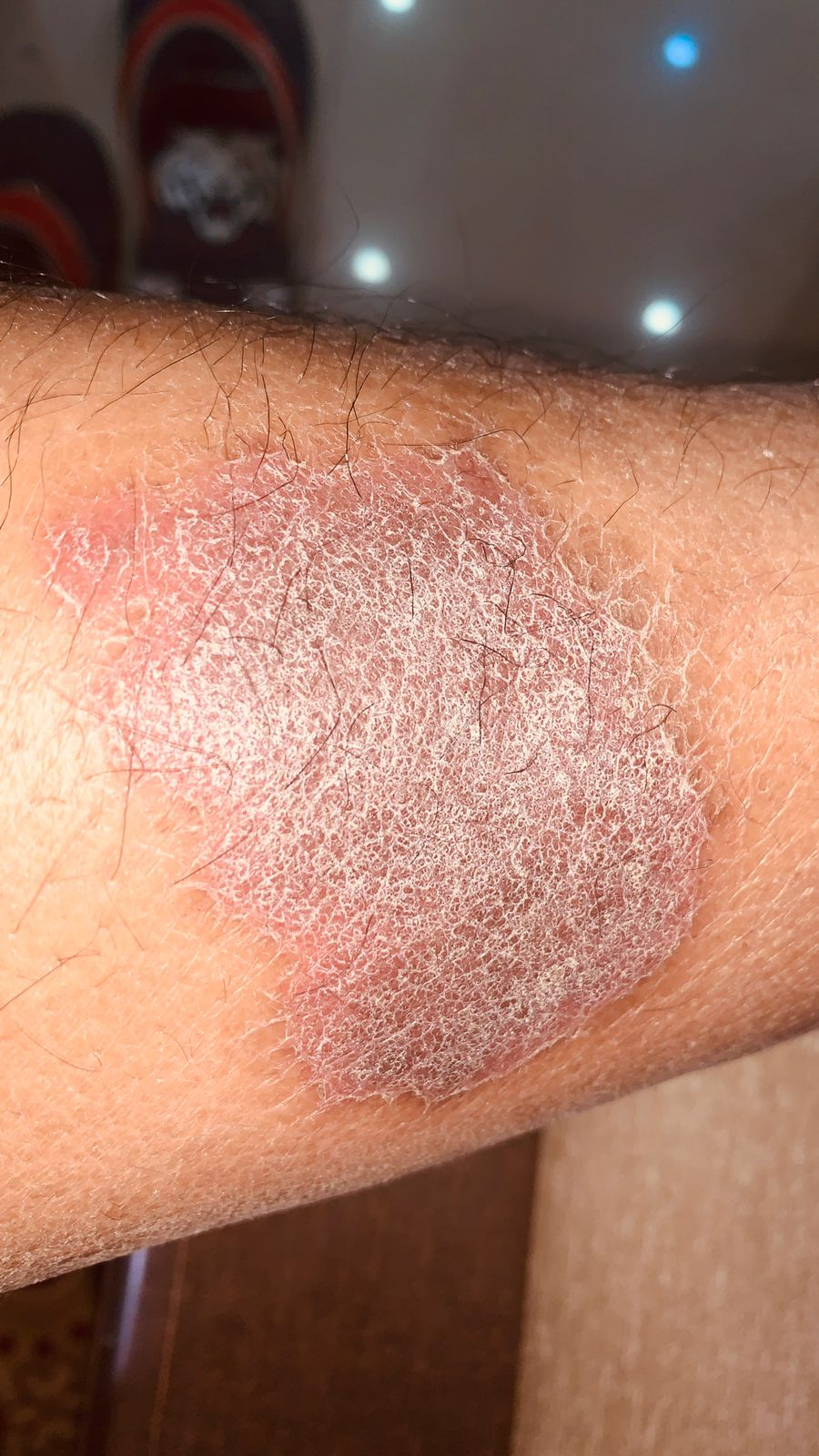



PSORIASIS
INDRODUCTION
• The main abnormality in psoriasis is the increased epidermal proliferation due to excessive division of cells in the stratum basale and a shorter cell cycle. In association with the basal cell hyperplasia, there is enhanced metabolism and accelerated synthesis and degradation of nucleoproteins, resulting in hyperuricaemia. There is proliferation of the subepidermal vasculature, which is responsible for the "Auspitz's sign". T lymphocytes are important in the pathogenesis.
CLINICAL FEATURES
• Commonly presents before the age of 35 years. It is equally common in both males and females.
• May be a presenting sign of HIV infection.
• The characteristic lesions are pink-red, sharply demarcated papules and rounded plaques, and are covered by silvery scales (plaque psoriasis).
• The most common areas of involvement are the extensor body areas (elbows and knees), gluteal cleft and the scalp. Trunk is also commonly involved. Traumatised areas are often involved (Koebner or isomorphic phenomenon) and this explains common involvement of elbows and knees.
• Besides typical lesions described above, the skin lesions can range from small drop-shaped papules (guttate psoriasis, frequently affect children and adolescents following a streptococcal infection or an upper respiratory tract infection) to pustules (pustular psoriasis,-multiple tender sterile pustules with an underlying, blotchy, and erythematous base), to generalised erythema and scales (erythrodermic psoriasis,--develops if existing psoriasis is poorly controlled, systemic medication are withdrawn suddenly, reaction to a drug such as lithium, or presence of an underlying systemic infection). Another type of psoriasis is inverse psoriasis characterized by lesions in the skin folds.
• About half of the patients have finger nail involvement. The characteristic nail changes are punctate pitting, onycholysis (separation of nail from the nail bed) and subungual hyperkeratosis.
• On scrapping a psoriatic lesion with a microscopic slide, silvery scales come out first. After that, pin-point bleeding appears at the base of the lesion. The latter is known as Auspitz's sign.
• Psoriatic arthritis is seen in 5-10% of psoriatic patients and usually occurs several years after appearance of skin lesions. It is a form of seronegative spondyloarthropathy.
• Medical co-morbidities: Some of the co-morbidities associated with psoriasis include ulcerative colitis, Crohn 's disease, coronary artery disease, metabolic syndrome and lymphoma.
GENERAL MANAGEMENT
• Most patients with psoriasis have skin lesions limited to localised areas. For these patients, topical therapy remains a part of their therapeutic regimen.
TREATMENT AT DR. SOHAN LAL CLINIC
The integrated POLYCLINIC facility offers patients to select their treatment either from the Department of Homeopathy or from the Department of Medicine.
We provide scientific, research-based, and professional services to people across the world, aiming to achieve the highest success rate.
